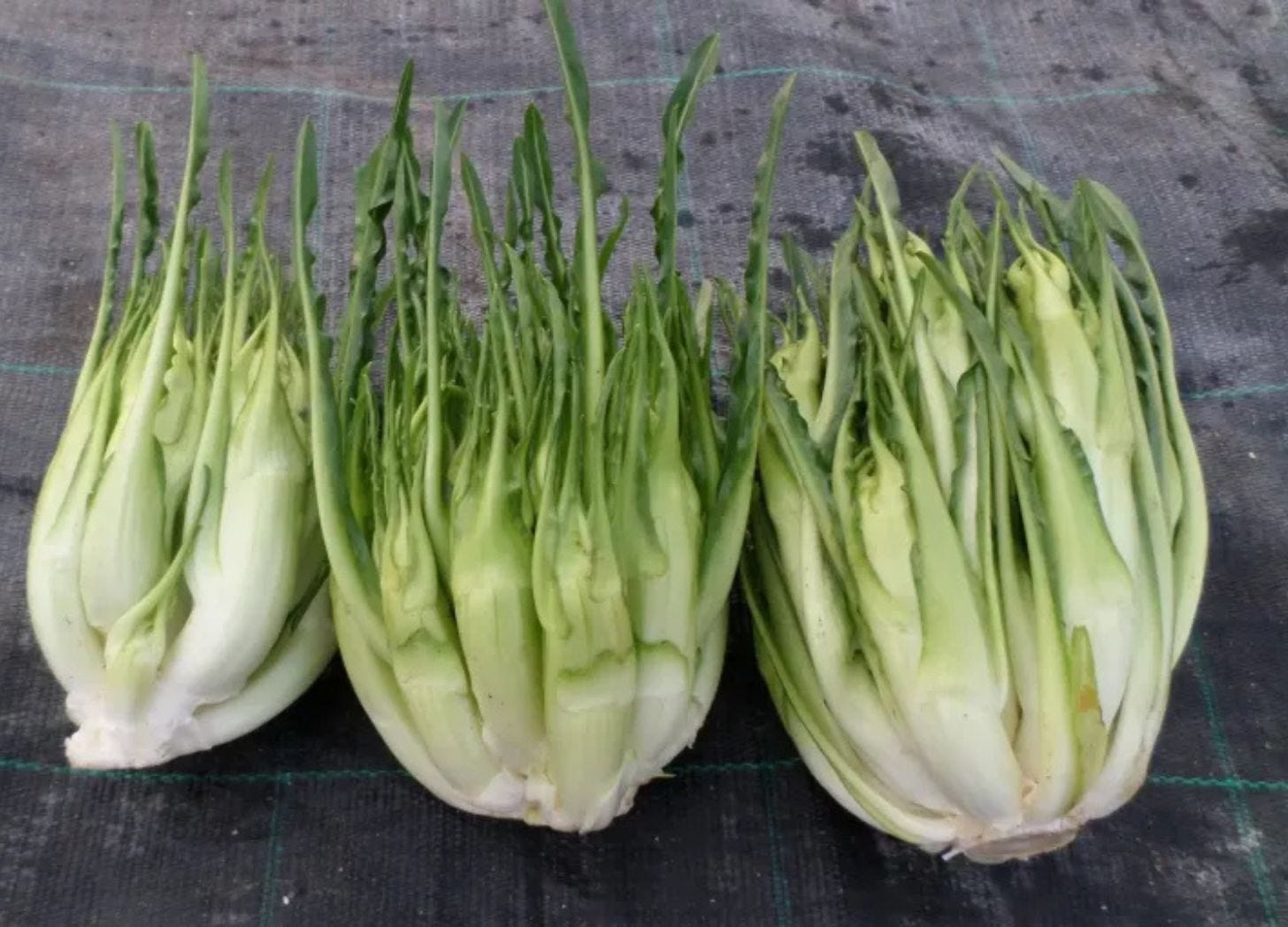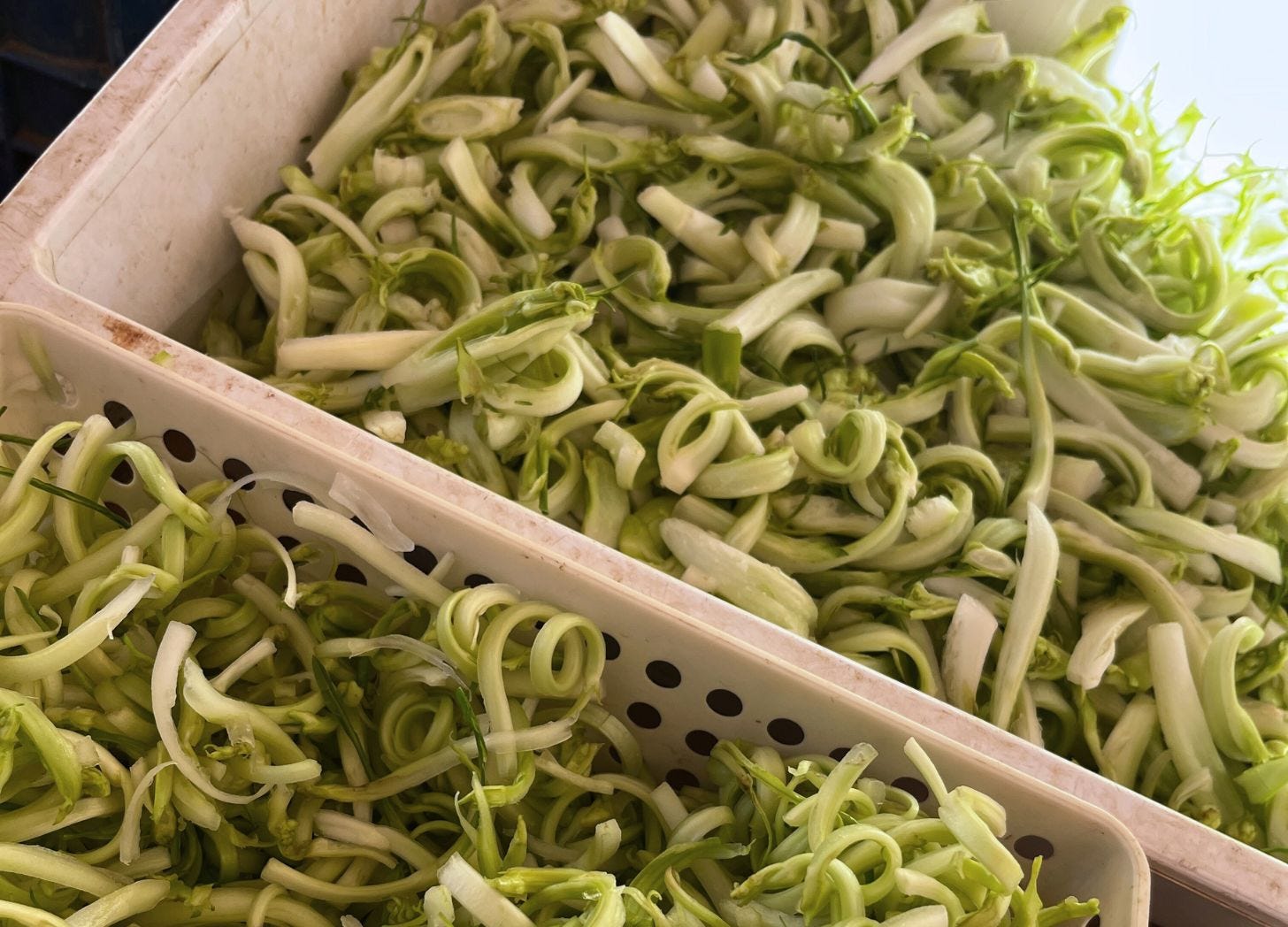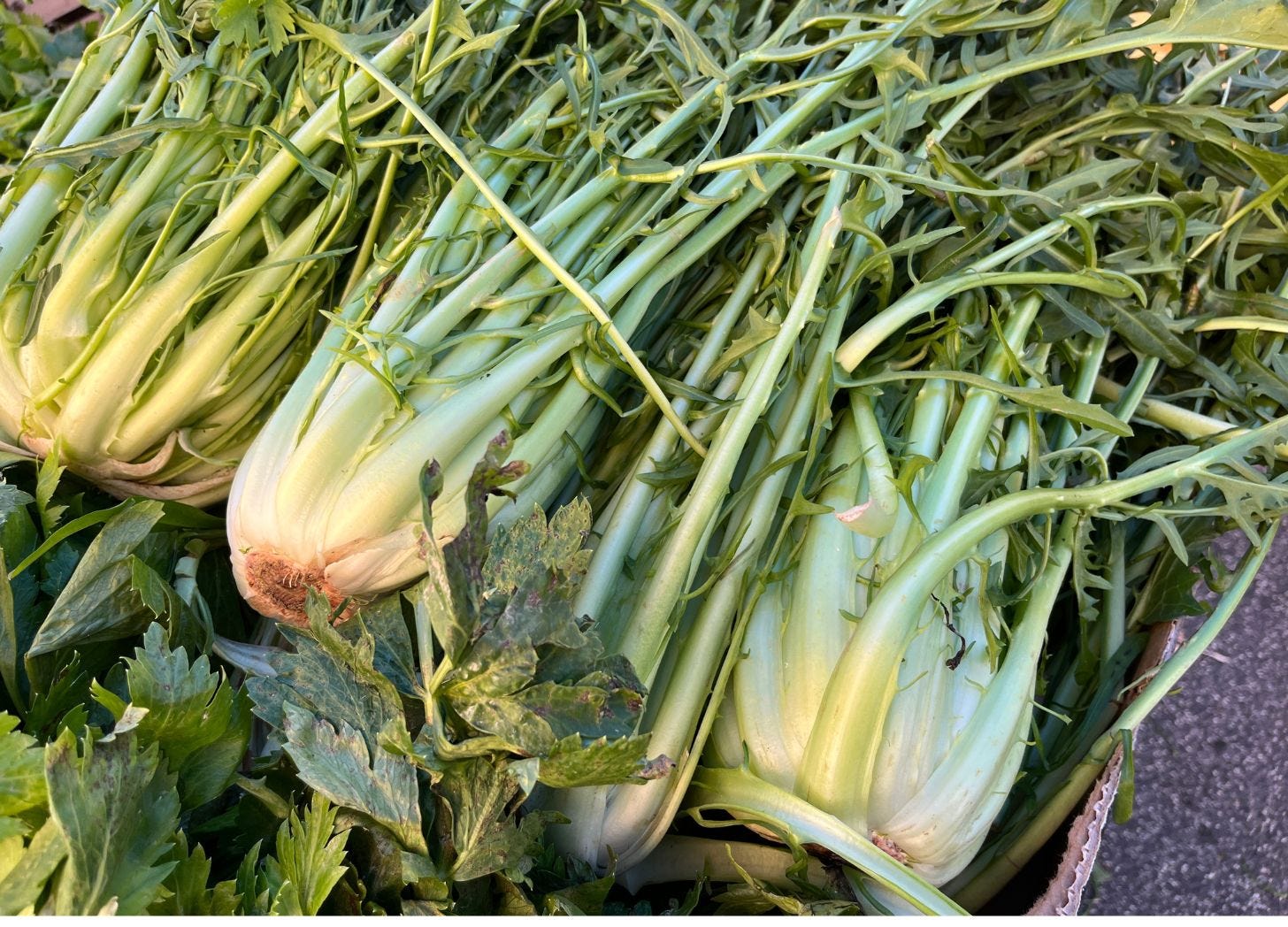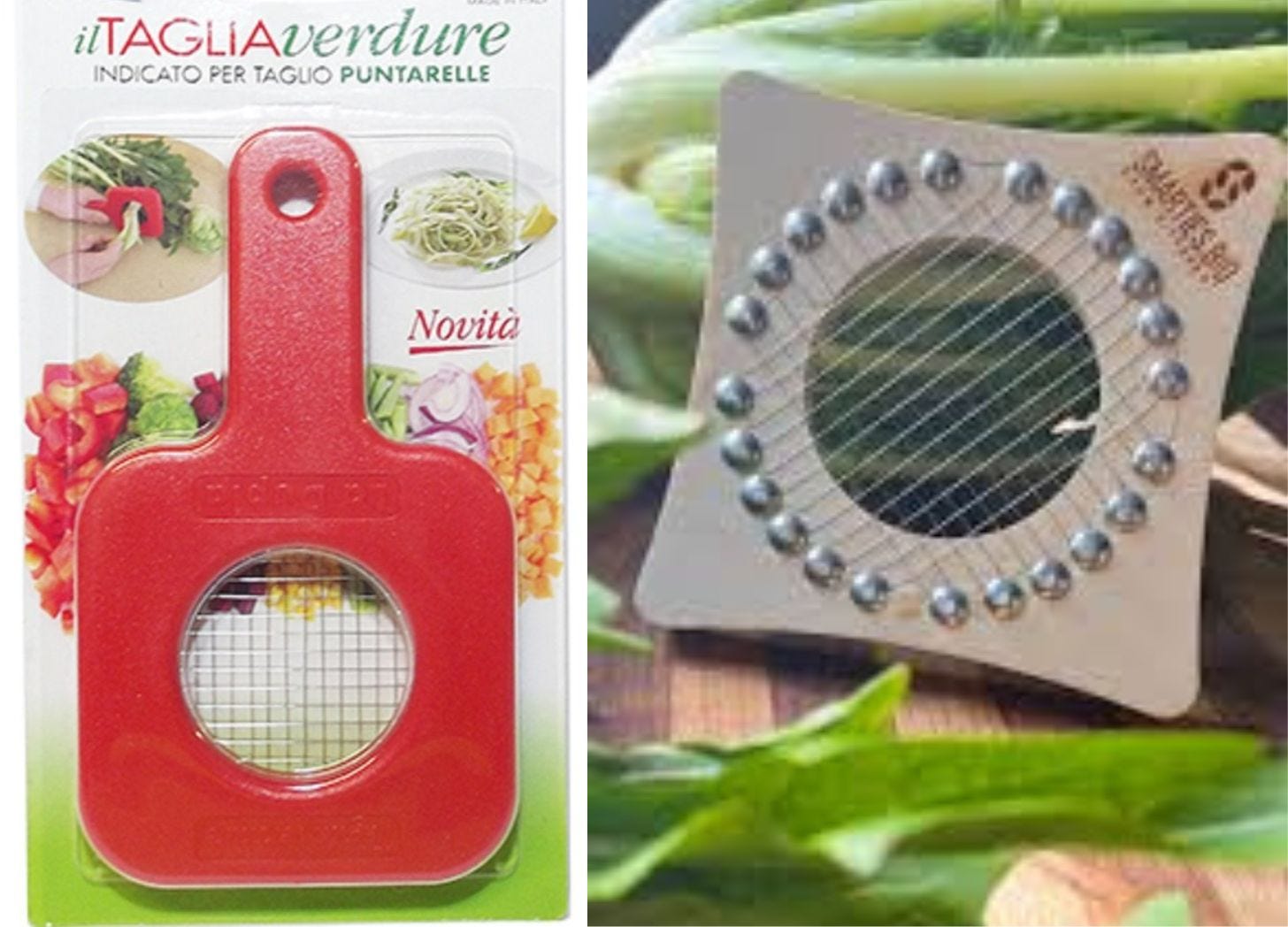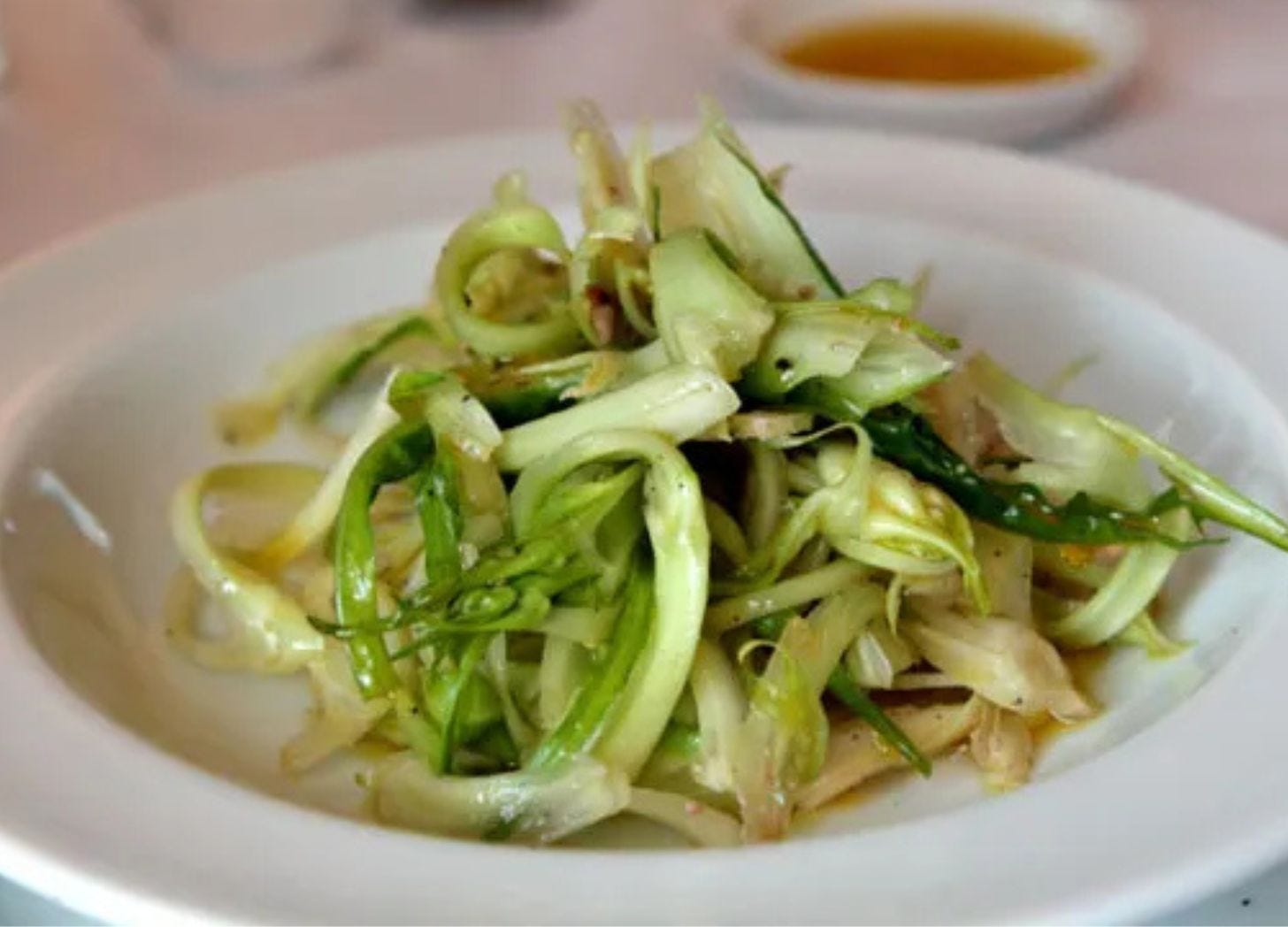Just the Tip: A Puntarelle Primer
Crunchy, curly, chicory shoots make a sumptuous Roman salad.
Of all the amazing produce popping up at markets in autumn, puntarelle (pronounced: poon-tah-ráy-lay), are my absolute favorite.
If you’ve been to Rome between October and May, there’s a strong chance they were listed alongside with the other seasonal vegetable sides, AKA contorni.
If this is news to you, keep reading. Fellow puntarelle diehards, stick around to learn more about the world’s perfect plant.
Puntarelle are always referred to in the plural. Like Doritos and Oreos, you’ll never eat just one.
The crisp, crunchy, and curly strands have and addictive texture that handles dressing and condiments like champion. They absorb all the flavor without wilting.
Punta is the Italian word for ‘point’ or ‘tip.’ It arrives via Latin: puncta ( past participle of pungere), which means to pierce, or strike with something sharp.
Puntarella is the diminutive version of the word. Ella/ ello and their grammatical relatives: etto/-etta, and ino/-ina turn ordinary words into something literally or figuratively smaller, special, adorable or cherished.
Some Examples
Piazzetta (little piazza)
Stradina (little street)
Scarpetta (little shoe) *Also part of the phrase: fare la scarpetta, which means to drag a piece of bread around your plate to sop up every last drop of sauce.
The expression is inspired by the idea of a shoe (scarpa) picking-up everything underfoot. A sweaty shoe covered on lord knows what is not appetizing.
The ‘etta’ in scarpetta makes it cute, linguistically.
Kitchenette, cigarette, and The Radio City Rockettes are great examples in English.
What Exactly are Puntarelle?
A member of the chicory family, puntarelle refers to specifically the inner shoots of the Catalonian chicory.
Chicory is an incredibly versatile plant, and a cornerstone of Roman cuisine.
They’re widely cultivated throughout Lazio, the region surrounding Rome, and parts of southern Italy, principally in Puglia.
Catalonian chicory sprouts as a bulb, much like fennel, and produces shoots and leaves. The leaves have serrated edges and an earthy, bitter flavor akin to dandelion greens and arugula.
In Roman cuisine, the leaves are flash-boiled and sautéed with garlic, olive oil, and hot red pepper.
The shoots are also bitter, but though less so. They’re sliced thin and sometimes chopped. A special tool exists for the task—it’s called a taglia-puntarelle, literally, a "puntarelle cutter.”
If you can’t find one, a sharp knife will do.
A cold-water soak with a halved fresh lemon softens their bite and primes them for serving raw or occasionally cooked. The lemon also keeps them from turning yellow.
You can toss them into any mixed salad for added crunch, like fennel or celery.
At my house, I serve them as their own salad, with a simple dressing of balsamic vinegar, olive oil, salt, and pepper. Last year, I ate them so many nights in a row that I lost count.
Puntarelle alla Romana (Roman Style)
The most famous way to serve them is Roman style.
The puntarelle are sliced thinly (often with a special cutter), then soaked in cold water so they curl and lose some of their bitterness.
Hand-cut puntarelle are the ultimate delicacy. They’re made from the youngest, and most bulbous shoots, and tend to be slightly less bitter. They’re nearly impossible to find, and absolutely worth shredding a finger tip to slice yourself.
They’re dressed with a sauce made from anchovies, garlic, olive oil, vinegar, with some optional add-ins like lemon and black pepper.
Recipe: Puntarelle alla Romana (Roman Chicory Salad)
If you cannot find these in your hometown, a great substitute is equal parts celery and fennel, slices thinly and uniformly. The celery should even curl in an ice bath.
Ingredients
serves 2–3 (or just one, if it’s me)
1 bunch puntarelle (about 500 g / 1 lb) *It’s totally common and beyond acceptable to buy them pre-cut at the market. One handful per serving.
4–5 anchovy fillets in oil + extra for garnish if you love them.
1 small garlic clove
3 tbsp extra virgin olive oil
1 tbsp white wine vinegar (variations: red wine vinegar, or balsamic)
A pinch of black pepper *optional
Procedure
Clean the puntarelle (OR purchase them pre-cleaned. No shame!)
Remove the outer leaves and keep the tender inner shoots. Slice them lengthwise into thin strips using a taglia-puntarelle (a wire cutter), or a knife.
Place the sliced puntarelle in a large bowl of very cold water (add ice if possible) for at least 30–45 minutes.
If using pre-cleaned, market puntarelle, give them an ice bath anyway.
Prepare the dressing:
In a mortar (or with a fork) mash the anchovies and garlic.
In a separate bowl, combine with vinegar and whisk. Add olive oil and whisk until emulsified to your liking.
Drain and dry the puntarelle.
Toss them with the dressing in a bowl until evenly coated. Pepper to taste.
Serve immediately for a crisper salad, or let them marinate for up to an hour in or out of the refrigerator.
*Garnish with extra anchovy if you like.



